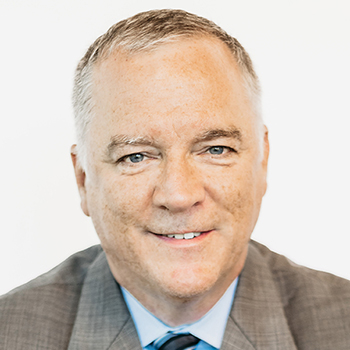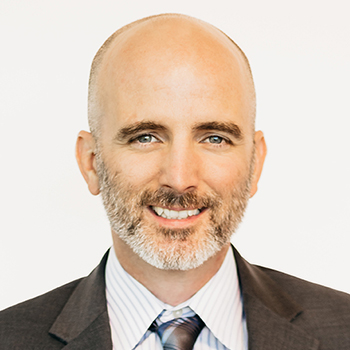
The Program of All-Inclusive Care for the Elderly (PACE) is a fully capitated, fully integrated, and comprehensive care program for adults age 55 or older living with chronic illnesses or disabilities. PACE has become the gold standard of care for the frail elderly. As the name suggests, PACE is an “all-inclusive” model of care, which means PACE organizations are at full risk and required to provide, or plan to provide, all service needs of their participants under a capitated payment system.
Developing a PACE program requires significant capital investment. This post will outline the three categories of capital that should be considered when developing or expanding a PACE program and the common financing options utilized by PACE organizations and their sponsors.
PACE Capital Investment
PACE is a wonderful program for the frail elderly that has garnered much deserved attention over the last two-plus years as our country’s health care system has tried to adjust to operating under a pandemic. However, developing a PACE program requires access to a significant amount of capital and requires a significant amount of time to get from exploration to operations. Access to capital and the rigorous state and federal application processes have been historical barriers to PACE growth. There are efforts underway to make the PACE development and implementation process more nimble at the state and federal levels, as well as to make the PACE model a more attractive option to those not eligible for Medicaid. In addition, access to capital has improved with the increase in partnerships and the influx of private equity capital.
The first step in developing a PACE program is to perform a market and financial feasibility study. One of the key conclusions of this study is an estimate of the capital needed to develop the program. The following is a summary of the three categories of capital that should be considered during the feasibility study.
PACE Center Development
The costs to develop a PACE center are the most variable component of the total capital needed. There are several decisions to be made that influence the total cost.
- Will you build, buy, or lease a building?
- How big will the PACE center need to be?
- How much renovation is needed for a leased building?
- What are the local market conditions for architect fees and construction costs?
- How much fixed and moveable equipment is needed?
- Will you buy buses and vans or utilize contracted transportation?
The market and financial feasibility study will determine the ideal size of the PACE center and how many will be needed in a given market. In addition, a thorough feasibility study will explore PACE center options available and determine the estimated development cost.
The many options available for PACE center development make this component of needed capital so highly variable.
PACE Startup Expenses
The PACE development and implementation period usually take between 15 and 24 months. The key activities during this period include the state and federal application processes, PACE center development, implementation of the staffing plan, execution of the business plan, state readiness review, and staff training and education. During this time a PACE organization is making decisions regarding critical health plan management functions such as electronic medical record (EMR), third party administrator (TPA), and pharmacy benefit manager (PBM). The following costs are typically incurred during this pre-opening period.
- Salaries and benefits of program leadership staff and key interdisciplinary team members.
- Implementation fees for EMR, TPA, PBM, and other health plan management tools.
- Consulting fees for assistance with the program’s application, development, and implementation.
- PACE center property insurance, lease, and utilities.
- Other expenses such as interest on a loan, National PACE Association (NPA) dues, information technology (IT), PACE center supplies, and marketing.
Startup expenses typically range from $750,000 to $ 1 million. A detailed financial pro forma prepared during the market and financial feasibility study will quantify the estimated capital needed for this category.
Operational Working Capital
PACE organizations are guaranteed to lose money for a period of time before break-even cash flow is achieved and the program becomes financially self-sustaining. Because of this, PACE organizations need access to capital to cover operating losses until break-even is achieved.
Break-even cash flow typically occurs after one and a half or two years of operation. How quickly you can achieve break-even cash flow is driven by several factors including the speed of enrollment growth, the adequacy of the Medicaid capitation rate, labor costs, fixed facility costs, and participant medical service utilization. Generally, the quicker break-even cash flow is achieved, the lower the working capital needed for operating losses.
Working capital to cover operating losses and cash deficiencies is typically $3-4 million. A detailed financial pro forma during the feasibility study will provide the estimated capital needed for this category.
Summary
The above three categories are the primary components of capital investment needed for PACE development. There may be other items to consider, such as state-specific reserve requirements that influence the initial capital investment. The total capital needed is generally in the $5-10 million range depending on the PACE center development option.
Financing Options
The PACE capital investment is typically funded through internal funds available from the sponsor organization, external debt financing, or a combination of both. Capital is also sometimes available through fundraising and grants.
For PACE organizations that do not have the luxury of accessing internal resources to fund PACE capital needs, it is necessary to seek external financing or explore partnership options. PACE is a capital-intensive program and takes longer to achieve a break-even point and positive return on investment than other health care lines of business. Because of this, it can be a challenge to find a lender with enough knowledge of PACE to be willing to accept the risk.
Though seemingly limited in number, there are lenders that do understand the PACE financial model and provide financing options structured specifically for PACE organizations. These organizations recognize the value that PACE brings to each community and understand the time it takes for a PACE organization to achieve positive cash flow and develop cash reserves.
In addition, partnerships have become a more common approach to funding the capital needs, or PACE development, and sharing the risk associated with operating a PACE program.
Another option to reduce the capital need for PACE center development is to engage a real estate development firm for a “turn-key” PACE center solution. Under this option, the real estate developer incurs all of the PACE center development costs and leases the building to the PACE organization. This shifts the capital costs to an operating expense by reducing or eliminating the building capital needed for construction or renovations and converting it to a monthly lease payment.
Summary
More PACE development and financing options exist today than ever before. It is very important for an organization to perform a thorough market and financial feasibility study to understand the amount of capital needed to develop PACE and to understand the options available for PACE center development and project financing. This information will be critical in making the go/no-go decision on whether to proceed with PACE development, and it will provide critical information needed in the PACE application and development process.
About Us
As a National PACE Association TAC, Health Dimensions Group (HDG) has successfully assisted many organizations with PACE market and financial feasibility studies, program development and implementation support, and operational improvement. If you would like to learn more about how HDG can assist you in exploring PACE as a solution in today’s challenging health care environment, please contact us at 763.537.5700 or info@hdgi1.com.












